Military Museums of London
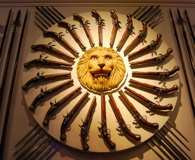 A Guide to the Best Museums for the Military History Buff
A Guide to the Best Museums for the Military History Buff
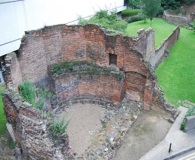 As the largest, and most visited city in Europe, London is cosmopolitan and modern yet with its numerous neighborhoods offers old world charms that are truly European. The city was founded even before the Roman invasions in the 1st century BC, and has survived civil wars, plagues, a great fire, two World Wars and endless invasions by tourists. London is home to millions, the seat of government for the U.K., the birthplace of punk rock and about one of the few cities today where you can find finely dressed soldiers on parade for reasons of ceremony rather than simply for security.
As the largest, and most visited city in Europe, London is cosmopolitan and modern yet with its numerous neighborhoods offers old world charms that are truly European. The city was founded even before the Roman invasions in the 1st century BC, and has survived civil wars, plagues, a great fire, two World Wars and endless invasions by tourists. London is home to millions, the seat of government for the U.K., the birthplace of punk rock and about one of the few cities today where you can find finely dressed soldiers on parade for reasons of ceremony rather than simply for security.
London also has much to offer military history buffs, and no other city in the world offers the number of museums, or the caliber of historic artifacts that are on display. While some museums charge admission, many, including the Imperial War Museum and Royal Air Force Museum are free to visitors (donations are encouraged and recommended). Here is a quick guide to the military history museums of London.
{default}The Tower Of London
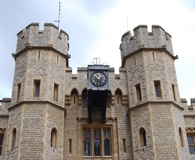 Officially Her Majesty’s Royal Palace and Fortress The Tower of London, it is more commonly just referred to as the Tower. The oldest sections actually date back to reign of William the Conquer, and it was home to later kings including Henry III and Edward I, both who enlarged and fortified this London fortress, as well as Lord Protector Oliver Cromwell, who choose the Tower as his residences over the nearby royal palaces.
Officially Her Majesty’s Royal Palace and Fortress The Tower of London, it is more commonly just referred to as the Tower. The oldest sections actually date back to reign of William the Conquer, and it was home to later kings including Henry III and Edward I, both who enlarged and fortified this London fortress, as well as Lord Protector Oliver Cromwell, who choose the Tower as his residences over the nearby royal palaces.
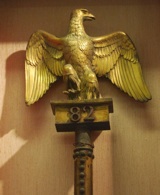 The Tower features an impressive collection of arms and armor from the Middle Ages, and is also home to the Royal Fusilier’s Museum, which contains a captured French Imperial “Napoleon” Eagle and other artifacts from the famous regiment. Admission to the Tower is expensive, and it is one of the most crowded of London attractions. Despite this the Tower is highly recommended, and could be a good start to a tour of London’s military past. Show up early in the morning during the week, and avoid the weekends when the grounds can be very crowded.
The Tower features an impressive collection of arms and armor from the Middle Ages, and is also home to the Royal Fusilier’s Museum, which contains a captured French Imperial “Napoleon” Eagle and other artifacts from the famous regiment. Admission to the Tower is expensive, and it is one of the most crowded of London attractions. Despite this the Tower is highly recommended, and could be a good start to a tour of London’s military past. Show up early in the morning during the week, and avoid the weekends when the grounds can be very crowded.
The Imperial War Museum
 Actually more than a single entity, the Imperial War Museum is a multi-branch national museum of war and wartime life from the First World War I to the modern day. The London branch is the largest and most impressive, and the main hall features a collection of armored vehicles, fighter planes and even a V-1 rocket! The permanent collection on the lower level is divided into the First, Second and Cold Wars, along with a gallery of items from the career of Field Marshal Montgomery.
Actually more than a single entity, the Imperial War Museum is a multi-branch national museum of war and wartime life from the First World War I to the modern day. The London branch is the largest and most impressive, and the main hall features a collection of armored vehicles, fighter planes and even a V-1 rocket! The permanent collection on the lower level is divided into the First, Second and Cold Wars, along with a gallery of items from the career of Field Marshal Montgomery.
The IWM features regular rotating exhibits, and currently includes Children of War, which will run until January 2010. A Falklands War 25th Anniversary Exhibition recently closed.
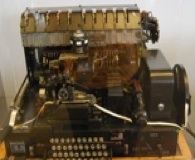 Admission to the main branch of the IWM is free, while the special exhibits may have a fee. While among the largest, and most visited of the military history museums the IWM is never overly crowded. It is open daily until 5pm.
Admission to the main branch of the IWM is free, while the special exhibits may have a fee. While among the largest, and most visited of the military history museums the IWM is never overly crowded. It is open daily until 5pm.
HMS Belfast
Another branch of the IWM is the HMS Belfast, a Royal Navy Cruiser, which played a leading part in the destruction of the German battle cruiser Scharnhorst as well as with the Normandy landings in 1944. The HMS Belfast was in service with the Royal Navy until 1965, and since 1971 has been used as a floating museum. It is located on the south bank of the River Thames just across from the Tower of London.
It features numerous displays that portray life on board during World War II, along with numerous exhibits related to the history of the Royal Navy.
National Army Museum
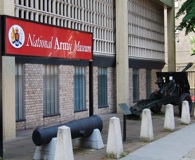 Located in Chelsea, the National Army Museum is truly the hidden gem of the London area attractions. A short bus or tube-ride away from the city center, the NAM offers an account of the British land forces from 1485 to the present. There are numerous “hands on” displays, where visitors of all ages can try on coats and helmets to get a sense of what the equipment and uniforms must have been like to soldiers of long ago.
Located in Chelsea, the National Army Museum is truly the hidden gem of the London area attractions. A short bus or tube-ride away from the city center, the NAM offers an account of the British land forces from 1485 to the present. There are numerous “hands on” displays, where visitors of all ages can try on coats and helmets to get a sense of what the equipment and uniforms must have been like to soldiers of long ago.
The art gallery is also exceptional, with numerous fine paintings of battle scenes from the high points in British military history.
Next door to the NAM is also the Royal Hospital, which is home to nearly 400 retired soldiers (Chelsea Pensioners). A small museum offers a look at the history of this institution.
Guards Museum
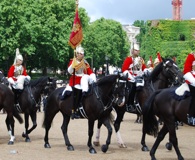 No visit to London would be entirely complete without taking in the changing of the guards. This ceremony is held daily during the summer, and every other day off-season (weather depending) at 11:30am. After watching the trooping of the colours, and the changing of the guard get the full experience by visiting the near-by Guards Museum, which is located under the Wellington Barracks.
No visit to London would be entirely complete without taking in the changing of the guards. This ceremony is held daily during the summer, and every other day off-season (weather depending) at 11:30am. After watching the trooping of the colours, and the changing of the guard get the full experience by visiting the near-by Guards Museum, which is located under the Wellington Barracks.
Here you can get a history of the five Guard Regiments (Coldstream, Scots, Irish, Welsh and Grenadier), with numerous displays of weapons, helmets, flags and more red coats than you’re likely to see just about anywhere else. And be sure to talk to the gentlemen who will be about the museum, as it is run daily by retired guardsmen, who are usually more than happy to talk about their days in the service.
[continued on next page]


Hello,
It´s a great guide there but it´s sorely missing the other branches of IWM, the War Rooms in London and the extraordinary Duxford Air Museum, had a very good day ther in 2006, with various types of aircraft from both wars flying about.